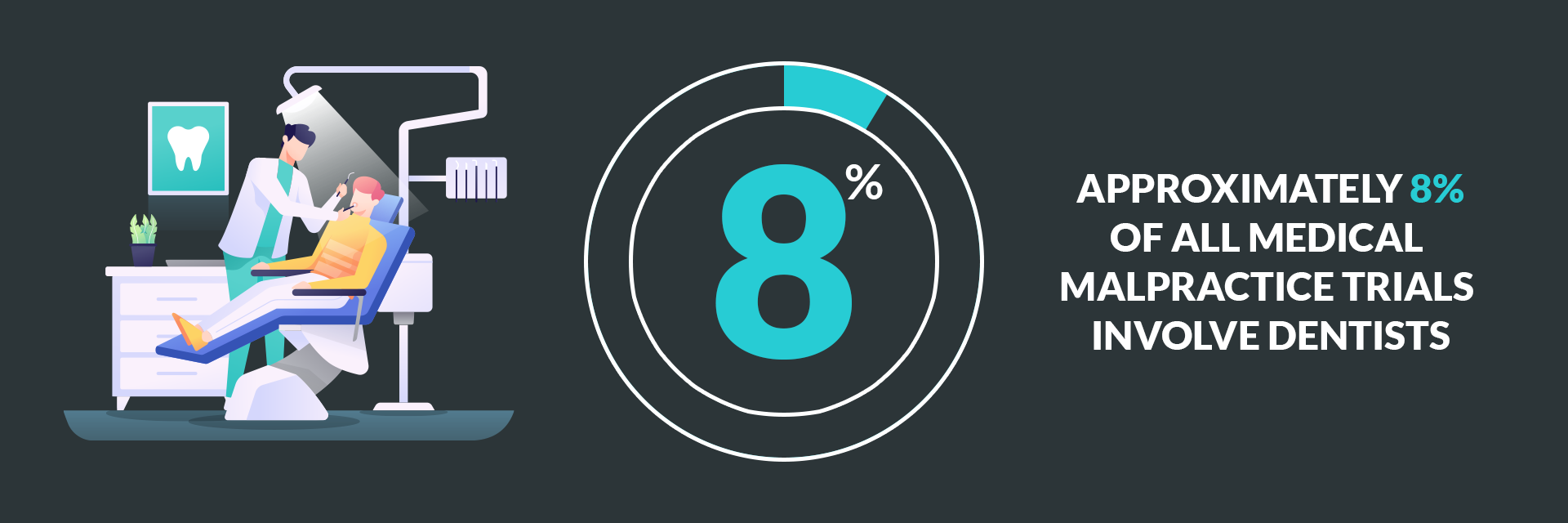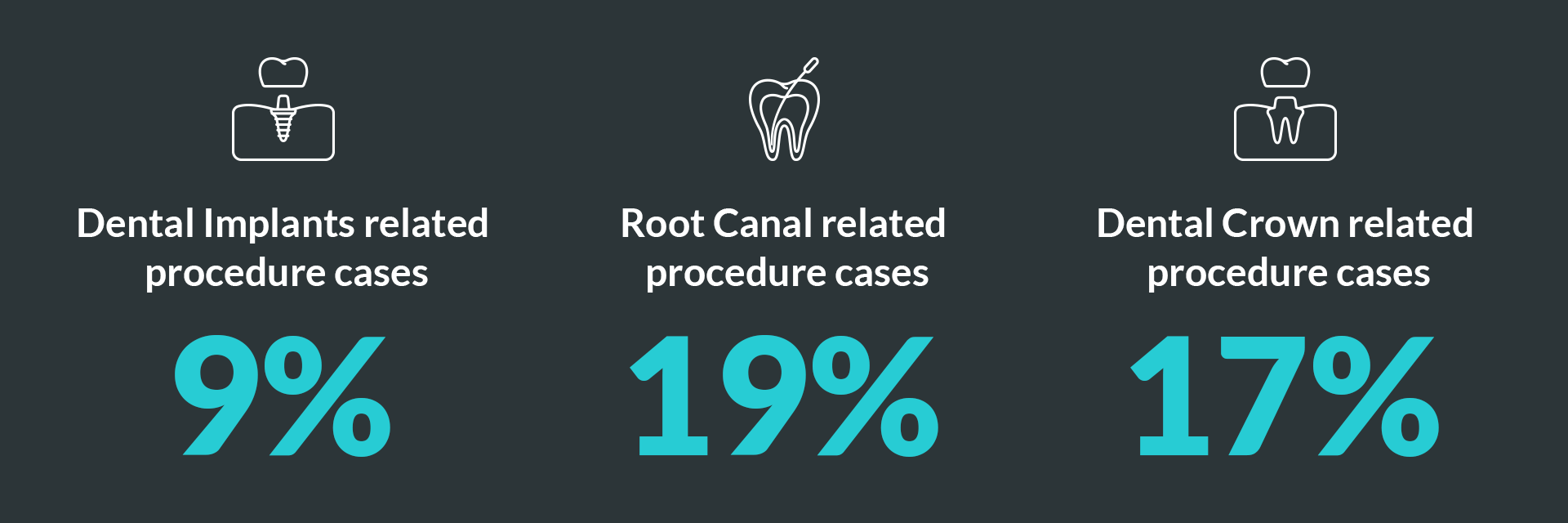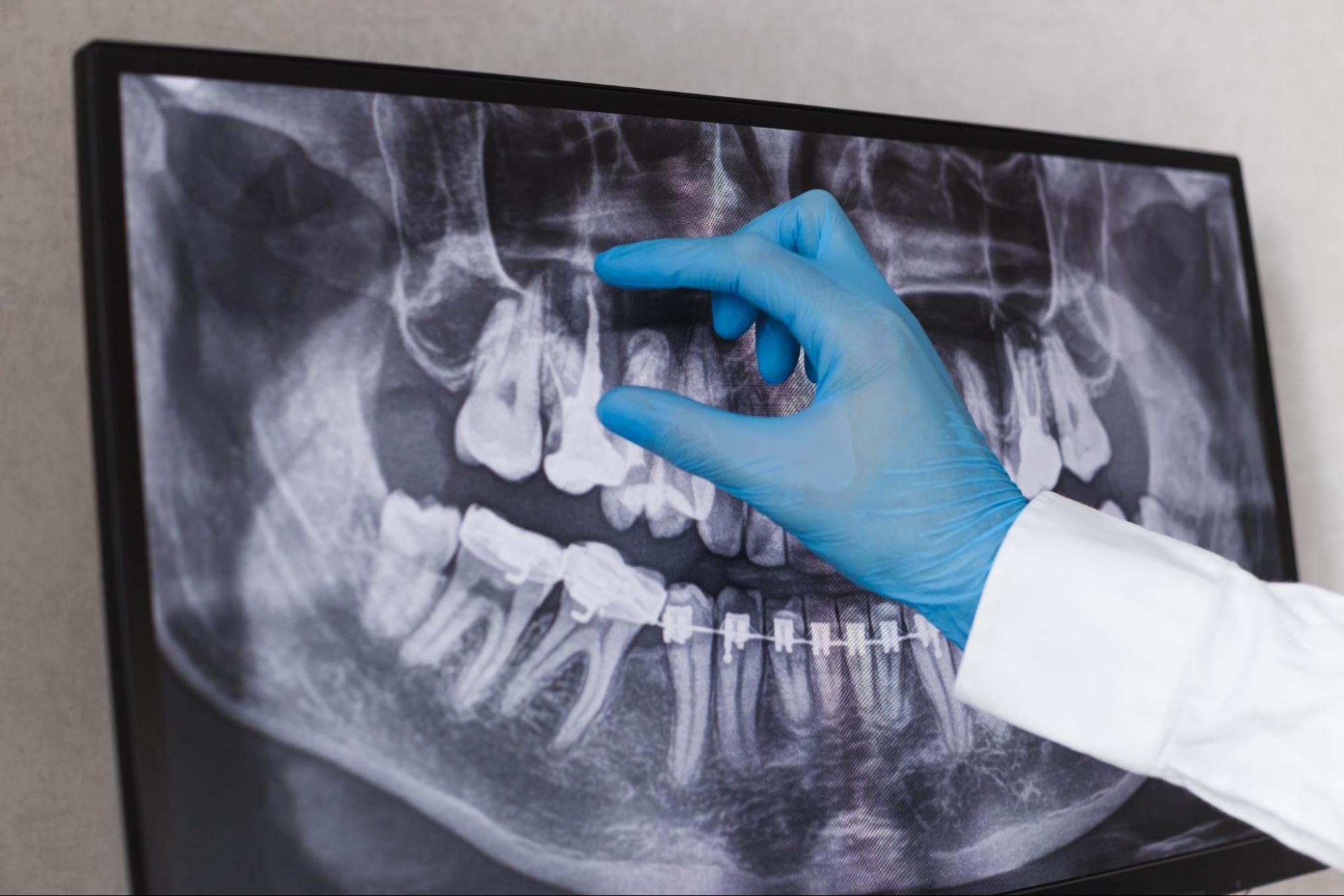There are risks involved with every aspect of our lives, but when it comes to dental procedures all risks must be shared with the patient in advance. Not only is this information essential to their decision of whether to go forward with the procedure, but it also can protect you from malpractice lawsuits if there is a negative outcome.
Once a patient has signed that they acknowledge the risks, it’s difficult for them to sue a medical professional for malpractice as they would need to prove medical negligence, lack of informed consent, negligent prescriptions, or improper use of medical devices.
While there’s no way to completely protect yourself, understanding dental malpractice can help you mitigate your risk. Let’s take a closer look at dental malpractice and 10 dental malpractice statistics.
Dental malpractice occurs when a dental professional performs a medical procedure incorrectly or fails to diagnose or treat a patient correctly. The term “malpractice” does not necessarily mean that the dentist is committing negligence specifically.
Instead, dental malpractice encompasses any type of dental treatment that deviates from acceptable standards outlined by the American Dental Association (ADA).
If a dentist is not performing the treatment according to accepted standards, then they can be held liable for medical malpractice or dental malpractice.
It is important to realize that the standard of care that a dentist should maintain is different for each patient. In order to determine if a dentist was negligent, one needs to look at the specific medical situation of the individual patient.
Negligence, as we know, is the failure to do something which a reasonably careful person would do under similar circumstances. It’s difficult to prove medical negligence as the patient must be able to show that there was some violation of duty on the part of the dentist.
Dental malpractice is considered to be a personal injury tort and therefore an actionable claim. A dental professional may be liable for medical malpractice or dental malpractice.
Working as a dentist always comes with liabilities and risks. It’s good to know what to avoid when dealing with patients and where to proceed with caution.
Here are 10 statistics about dental malpractice so you can be better-informed:
1. There were 3,833 medical malpractice claims in a five-year period ending in 2020. (Source)

Healthcare is a hot topic in recent times with the COVID-19 pandemic occupying media streams. With increased access to medical information, more people are becoming aware of the benefits of seeking medical care when ill. However, the increased awareness of the importance of healthcare has also increased patients’ sense of ownership in regard to their healthcare.
With increasing responsibilities being placed on healthcare and likely more people using healthcare services, the number of malpractice claims is likely to increase.
Suing a clinic is typically difficult as patients are made aware of risks when seeking medical care. Medical malpractice is within personal injury law and thus it's up to patients to prove there was negligence, lack of informed consent, negligent prescriptions, or misuse of medical devices.
2. Approximately 8% of all medical malpractice trials involve dentists. (Source)

There aren’t nearly as many dental malpractice claims as there are medical malpractice claims. However, dental malpractice is still serious and patients can experience nerve damage, infections that may affect the brain, and other serious consequences.
The largest number of medical malpractice claims were issued for family practices where the most commonly reported allegation was a “failure to diagnose.”
Seemingly, a more common complaint about dental practices is prescribing overtreatment and fraudulent behaviors. It’s difficult to determine what constitutes necessary treatment, and it’s hard for patients to evaluate advice rationally when they lack the knowledge themselves and are trusting health professionals.
As regulations surrounding dentistry increase, it may be easier for lawyers to prove wrongdoing on the part of the dentist. The medical field is under increased scrutiny, and dentists and doctors alike are being evaluated strictly to ensure they are acting in the best interests of their patients and society.
3. The majority of allegations against dentists are treatment-related. Technical skill risk factors are the highest category with 85% of claim volume. (Source)

Treatment-related issues more often occur during procedures such as root canals, crowns, and implant procedures. These procedures contain more circumstances that can often contribute to allegations since they contain higher degrees of clinical judgment, technical skill, and patient behavioral issues.
When the claims are reviewed, nerve damage claims appear often during implant procedure malpractice suits.
4. 82% of treatment-related injuries are classified as medium clinical severity. (Source)

Injuries during dental procedures are often not life-threatening, instead of resulting in medium clinical severity. Usually, injuries are non-permanent and if they are permanent they do not disable the patient's oral function.
Dentists can damage oral structure and tissue or cause infections. However, it is hard for patients to prove that the dentists caused the infection because the mouth is a hive for bacteria, so infections may be from an endemic source.
5. 10% of injuries involve high clinical severity outcomes. (Source)

Only 10% of injuries are highly severe, including disabling paresthesia, septic infections, or procedures that have a significant negative effect on tooth and jaw functionality.
Sepsis can be life-threatening and is an extreme response to an infection. It is difficult to sanitize the mouth area.
As well, anesthesia-related suits were some of the most costly due to high-severity patient injuries. Sedation and anesthesia are an important part of reducing pain and anxiety, and for dental patients with special needs.
Improper use of anesthesia can result in notable side effects like cardiovascular collapse, depressed breathing, mental or physical impairment due to hypoxic brain damage, and even death. Cases involving the misuse of anesthesia are rare but are high risk.
6. Dental implant cases are, on average, the most expensive to defend, and comprise 9% of case volume. They are more than twice as expensive to defend as root canal and crown-related procedure cases, which take up 19% and 17% of case volume, respectively. (Source)

More than 15 million root canals are performed each year in the U.S. The number of dental malpractice cases for root canals is a small fraction of the number that are performed.
Crowns and root canals go hand in hand and often occur in conjunction. Both of these are common procedures that many people in America undergo with little ill effect.
A dental implant is a more invasive procedure, and it is becoming an increasingly popular choice for replacing missing teeth. The need for dental implants is increasing as the population ages, with around 19% of Americans over age 65 missing at least one permanent tooth. The patient risk with dental implants is higher than root canals and crowns.
Dental implants are becoming preferred over dentures or bridgework, and it’s expected that these trends will continue as Americans receive more dental coverage.
7. Cases involving nerve damage, while accounting for just 10% of patient outcomes, are among the most expensive on average, with total dollars paid more than three times that of damaged teeth and more than twice that of infection-related outcomes. (Source)

Nerve damage can occur during root canals, implants, orthognathic surgery, and during extraction of impacted molars. While it’s uncommon, during these dental procedures the inferior alveolar nerve and the lingual nerve can be injured.
This leads to loss of feeling in a patient’s lip, tongue, or mucosa. This can result in severe social difficulties as the patient may experience loss of taste and difficulty speaking.
Since nerve damage has a profound effect on the patient’s life, it’s clear that payouts would be more costly for dental practices. Nerve damage can be alleviated with microsurgical repair and many cases of nerve damage can be treated.
8. With approximately 125,000 dentists in active practice, approximately 2,000 (1.6%) will face a civil malpractice case in any given year. (Source)

A medical malpractice lawsuit is initiated when a patient sues a doctor or other health care provider. A malpractice lawsuit is filed in state court. Dental malpractice lawsuits are also referred to as medical malpractice lawsuits.
Certainly, most of these cases are resolved without the need for trial. But, when litigation does occur, it can be costly, time-consuming, and emotionally draining.
9. On average, dentists can expect to be personally charged with three to five legal cases over the course of their careers. (Source)

Dentists in America can opt out of carrying a malpractice insurance policy. Since the passage of the Patient Protection and Affordable Care Act (PPACA) in 2010, more patients received health insurance and there has been a rise in some forms of dental treatment due to increased coverage.
Notably, there was a rise in the number of tooth implants. This is speculated to have been caused by lower-income individuals who previously could not afford dental care seeking treatment.
As the sudden increase in insured individuals potentially strains system availability and increases malpractice claims, malpractice insurance premiums have seen some increases. So, while dentists can currently expect to be charged between three to five times over their careers, it’s likely that those numbers will increase.
Other professionals who are employed by or contracted by a dentist can also be held liable for malpractice. For example, patients can sue dental hygienists for failing to keep medical history current and leaking private data.
Typically, dentists are more likely to face cases with higher payouts due to the nature of their job and level of responsibility.
10. The average paid indemnity for a dental or group practice is nearly $81,000, and the average defense costs are just over $31,000. (Source)

The median annual income of dentists in America was $164,010 in 2020 with 139,200 dentists in America. Successful malpractice claims can result in average costs of $112,000, which is a large part of a dentist's salary.
Thankfully, dentists can choose from a variety of insurance companies to protect themselves from large payouts. Some popular choices for liability insurance for dental practices include MedPro Group, Professional Solutions, CNA, and Professional Protector Plan for Dentists.
The number of malpractice claims with a paid indemnity was 140 in a five-year period ending in 2020. Though the yearly rate of cases may seem low, the risks of a given dentist facing a successful malpractice lawsuit throughout their career are increased.
It’s unlikely for a dentist to be successfully sued for malpractice, however, all dentists likely will face litigation at some point in their career. As well, the cost of malpractice insurance for dentists has increased over the past few years.
With the Patient Protection and Affordable Care Act (PPACA), more people have health insurance and this could strain the system. As a result, malpractice could become a more prominent issue for dentists in the coming years.
Dentists and other dental healthcare professionals with malpractice insurance are financially protected when they are sued by patients. Without insurance coverage, malpractice lawsuits can result in a large financial loss for a dentist and can result in the dentist being unable to practice.
Some patients seek dentists that have general liability insurance for added security.
Dentists should note that malpractice cases are often treatment-related and the cases with the highest payouts are typically due to medical errors in more invasive procedures and the use of anesthesia.
Dental health professionals should always put patient care at the forefront of their business. If their patients' needs are the primary concern, it’s unlikely that they will face successful malpractice suits.
